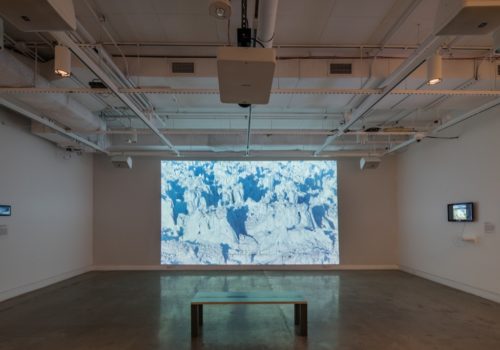The International Center of Photography’s new exhibit, “Perpetual Revolution: The Image and Social Change,” could hardly be better timed.
These are tumultuous times, and they’ve only gotten more turbulent in the weeks since the inauguration of Donald Trump. The men and women wielding signs, banners—and yes, cameras— on the streets of New York would do well to step into the International Center of Photography, where they can both see their voices and experiences reflected and learn about the profound ways in which their causes are expressed and shaped visually.
The expansive exhibit, which comprises 117 objects from more than 100 artists, is divided into six sections covering disparate but powerful movements— Black Lives (Have Always) Mattered, The Fluidity of Gender, Climate Changes, ISIS and the Terror of Images, The Flood: Refugees and Representation, and The Right-Wing Fringe and the 2016 Election.
ICP Curators Carol Squiers and Cynthia Young, along with a team of assistant and adjunct curators, propose that these movements aren’t simply documented by images, they’re propelled by them, and, in a sense, waged through them. New means of image production and distribution—camera-equipped phones and social media, chief among them—they argue, have accelerated the rise of these movements with unprecedented speed.
All modern revolutions have recognized, to an extent, the power of images, but it’s no surprise that two of the most extremes ones in the exhibit have articulated that idea most clearly and, perhaps, utilized it most effectively.
In the section on the Islamic State, a man in a recruitment video preaches, “It must be clear to you, my fellow believer, that those who carry the cameras will be greatly rewarded by God. So I invite anyone who can support God’s religion by carrying a camera and entering this battle, which has now developed into a true battle of media.” The surrounding videos and photographs testify to the scores who have responded to that call. Their products are slick and professional, highlighting the ways in which the tools previously limited to mainstream media have been democratized.
The section on the American right-wing fringe, meanwhile, comprises just two slideshows, with images sourced from Facebook, Instagram, Reddit, Twitter, and various websites. The memes, Photoshop composites and cartoons on display are almost entirely homemade and posted to social media—a testament to the power of activist movements to bypass media gatekeepers and traditional forms of image-making.
The other sections are, to a greater extent, concerned not just with the present moment but with history, and with the ways revolutions have been represented by outsiders. In The Fluidity of Gender, media made for and by the queer and trans community are shown alongside mainstream magazine covers. The contrast is striking. Black Lives (Have Always) Mattered, meanwhile, loos at both Black Lives Matter and the civil rights movement of 20th century. A video by Sheila Pree Bright, #1960Now: Art + Intersection, makes this connection explicitly, but everywhere you turn, the past and present visually echo one another. In Climate Changes, the first image to remark here is Earthrise, the iconic NASA image that became an emblem of the modern environmental movement. Elsewhere in the space, videos and images are created by activists themselves.
Each section is meaty enough to merit a visit all on its own. Taken together, the sheer amount of material is overwhelming. Walking through the exhibit is to experience the world across different time periods, geographic regions and cultures. Almost every conceivable type of photography is included, from vintage documentary photos to Instagram feeds to magazine covers to art prints. There are also diverse multimedia elements, including YouTube music videos, news segments, and some that defy easy cateogrization, including Hakan Topal’s amalgam of video, 3-D animation, digital images and sound, Untitled, which was commissioned for the exhibition.
While all the movements depicted exist under the same roof and in close proximity to one another, the curators have missed an opportunity to more extensively demonstrate the ways in which those movements are connected. Climate change, of course, has, in part, spurred the refugee crisis. ISIS propaganda has informed America’s right-wing fringe, and the right-wing fringe has inspired ISIS propaganda. The Black Lives Matter movement is tied to notions of gender representation and identity. Visitors to the ICP may make these connections on their own, but it would have been interesting to see how the curators might have further illuminated or emphasized them. No revolution can be fought—or won—in a vacuum.
Jordan Teicher
Jordan G. Teicher is an American journalist and critic based in Brooklyn, New York.
Perpetual Revolution: The Image and Social Change
January 27 to May 7, 2017
International Center of Photography
250 Bowery
New York, NY 10012
USA
















